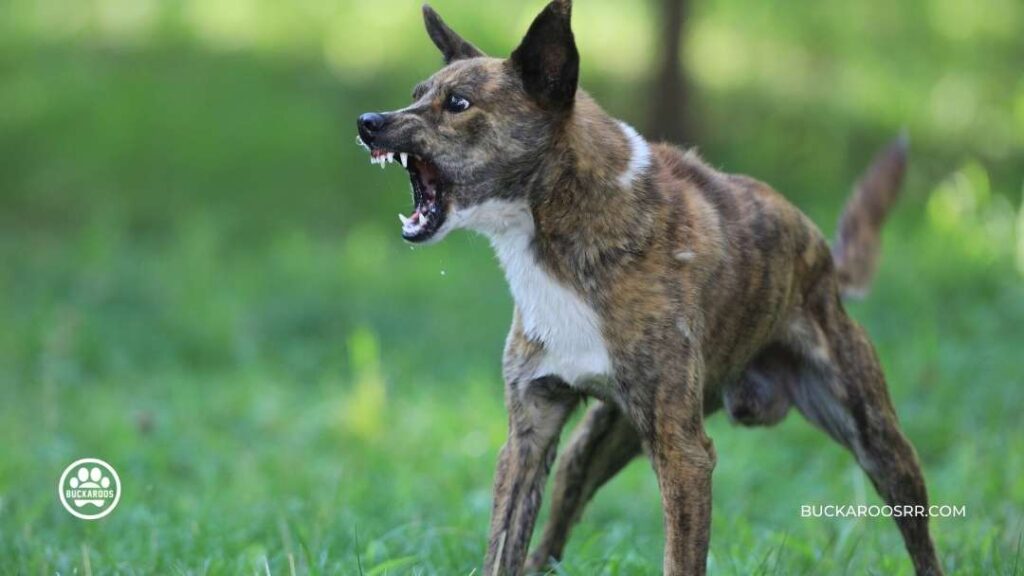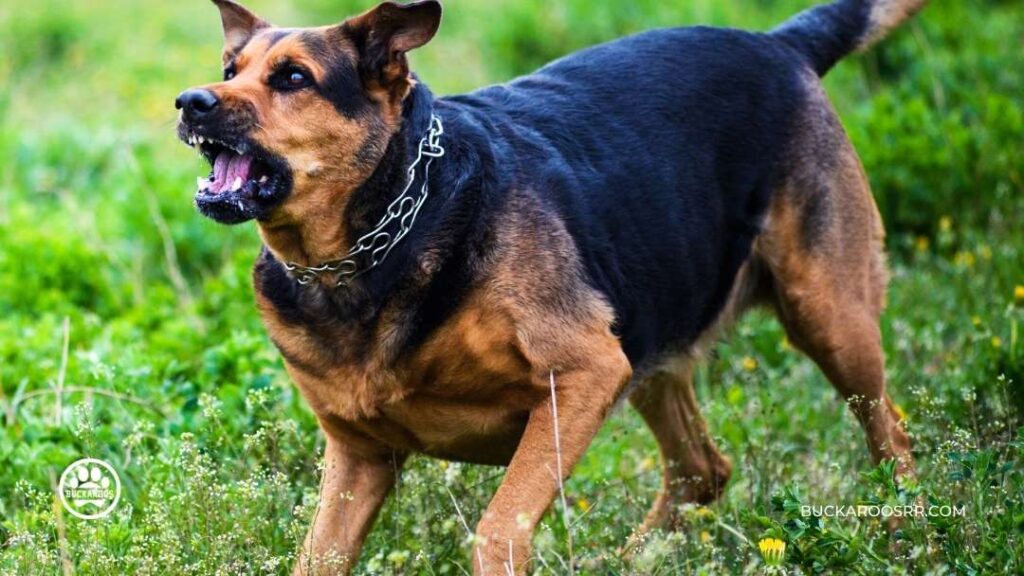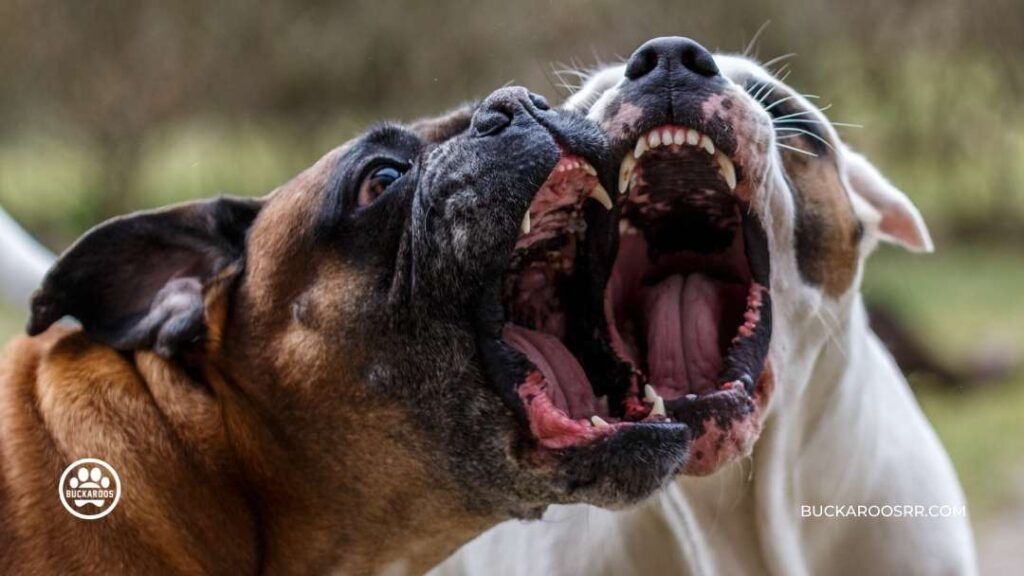Are your friends and family afraid of your dog? Do you find it hard to control your dog’s aggression? Want to know the triggers for aggression in dogs?
Well, dogs do know how to communicate their aggression through behaviors like lunging and biting, thus alerting people to potential danger. Several factors contribute to your dog’s aggressive behavior, including physical signals associated with aggressive movements. Dog owners must recognize these signals to manage and educate their dogs. In addition, they should learn about the situation and things that will make dogs aggressive.
If left unresolved, they can indulge in public scenarios where injuries can happen from misreading a particular situation. Therefore, it’s crucial to determine the reason behind a dog’s aggression which will help you deal appropriately with the issue and find an appropriate remedial response. There are many reasons why a dog may act aggressively.

triggers for aggression in dogs?
Examining some of the most common triggers for dog aggression will help you determine your pet’s issues. Suppose your dog is aggressive or reactive when exposed to any environmental triggers. In that case, you will want to find a qualified, experienced behavior managing professional.
Guarding their territory
Dogs consider their castle home. They feel very protective of their properties, mainly since they are in charge of defending them. They even think intruders shouldn’t come near what they feel is rightfully theirs. As a result, dogs tend to get upset when people or other animals trespass on their territory. The dog views this as a form of resource guarding. Hence most dogs will quickly scare or injure any trespassers who cross boundaries into their property.
Medical condition
Suppose a dog has never shown any sign of aggression and suddenly begins growling, snapping, or chasing in your yard. In that case, it may be caused by a disease or illness. For example, pain is a common cause of aggression in dogs. Therefore, a sudden change in how you usually interact with your pet could anger them.
Your dog may have sustained an injury, illness, or painful growth, causing them discomfort and stressing them out. Dogs always want to play no matter what their age. However, suppose a dog suddenly shows aggression for seemingly no reason. In that case, it’s highly likely because they are in significant discomfort and experiencing pain.
Out of fear
A dog can only exhibit aggressive behavior if it feels threatened, has no means of escape, and is prepared to defend itself. This is because three main fears govern dogs:
- Coming into contact with something they perceive as a threat
- The inability to access food or water feeling trapped in an undesirable environment such as a cage.
Frightened and intimidated dogs often know they have no choice but to lash out. It has often been suggested that dogs scared of their surroundings are more likely to react aggressively when confronted with fear.
A general example is the sound of fireworks which can be scary and intimidating. So prepare your dogs for fireworks on the 4th of July to help them cope with the surrounding situation.
Guarding of resources or possession
A dog who feels that his personal property is threatened may well feel it’s necessary to guard said possessions against being taken away from him. This is precisely what possession aggression is, and this behavior can come about differently if a human or another animal comes too close to a dog’s bowl when they have food in it. Or if someone goes near a dog who has just discovered a favorite toy.

But Are All Dogs Prone to Aggression?
Well, the intensity at which a dog defends his property and possessions might vary from one pet to another. The power of behavioral training, how good they are at socializing, and other factors decide the aggressive triggers and levels in a dog.
Being dominant
Understanding when and why your dog might feel he needs to assert himself is one of the most important things to know. Dogs are not naturally dominant or submissive, although some stressors can make their behavior go in that direction. This change happens because of behavior, not personality traits such as how they were raised as puppies or what breed they belong to.
Some common reason dogs show dominant behavior is because they want to lay claim over something. It may be an area or a person- or because they’re not getting what they think they deserve.
Redirected small dog aggression
Pups who find themselves unable to reach their goals or restrained in some way are more likely to use behavior that could be interpreted as aggression. But, unfortunately, they most probably have nothing better to do with the energy they’re feeling. It’s called redirected small dog aggression, which can be a significant problem if you aren’t watching for it!
A dog chained may spend the day straining to be free. Or it may be pestered by neighboring kids consistently. The restrained dog usually barks and growls more fiercely as the frustration grows. It is considered one of the signs of dog aggression towards humans. Hence when the owner approaches, the dog may redirect its frustration and bite the owner.

How can I avoid aggression problems in the future?
To be honest, defining a permanent cure for aggression may not be available. For example, your dog may adapt or learn to stay calm against a trigger but might react to another new or sudden situation. Similarly, he might familiarize himself with some strangers. Still, he may again act rationally in front of any new guests or neighbors. However, learning to deal with the situation will help you cope well in the future.

How to deal with my aggressive dog?
Aggression can be controlled and reduced, and observing your pet can help you prepare for future triggers. However, aggressive behaviors can also be dealt with by seeking professional help, like training your dog to be more social. Such pieces of training are provided by Buckaroos 360 Dog Boarding Centre in Pauls Valley, Oklahoma. Moreover, pet parents outside Pauls Valley can also avail themselves of these services from the service areas across Oklahoma.
To sum up, the best way to deal with your dog’s aggression is to:
- Correct or adjust the environmental trigger.
- Train your dog for the trigger if it is a particular situation or event.
- Seek medical advice from your Veterinarian.
Rewarding your dog for behaving calmly around the fear-provoking aggression trigger is part of managing the problem. Treats similar to homemade jerky work best since they are delicious and something your dog may not usually get a chance to eat daily. This way, you’re letting him know that good thing happen when he acts in a certain way encountering a trigger. Thus allowing you to desensitize him to his fears more easily.
In conclusion
A pet parent’s first and foremost obligation is to educate themselves on what causes sudden aggressive behaviors in dogs. Secondly, knowing how to deal with these aggression issues is also mandatory.
Several things can trigger aggression in dogs, including fear, possessiveness, and hunger. In many cases, aggression is simply learned behavior. Dogs who constantly feel threatened by other dogs or are never properly socialized are more likely to be aggressive. However, even the most well-behaved dog may become aggressive if it feels threatened or is provoked.
While aggression problems are severe, the good news is that it is possible to help your dog and reduce the issues. You should not hesitate to approach your vet if you are worried about your dog’s behavior.





